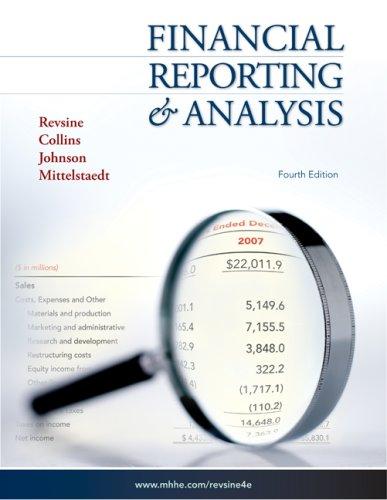On April 23, 2008, Starlight Department Stores Inc. acquired a 75-acre tract of land by paying ($25,000,000)
Question:
On April 23, 2008, Starlight Department Stores Inc. acquired a 75-acre tract of land by paying \($25,000,000\) in cash and by issuing a six-month note payable for \($5,000,000\) and 1,000,000 shares of its common stock. On April 23, 2008, Starlight’s common stock was selling for \($80.00\) a share and had a \($2.50\) par value. The land had two existing buildings, one that Starlight intended to renovate and use as a warehouse, and another that Starlight intended to demolish to make way for the construction of a new department store. At the time of the purchase, the assessed values for property tax purposes of the land and the building to be renovated were \($105,000,000\) and \($20,000,000\), respectively. To complete the purchase, Starlight incurred legai fees of \($25,000\). The cost of demolishing the unneeded building was \($50,000\). Starlight paid \($250,000\) to have the land graded so that the new store could be built. Starlight paid a total of \($100,000,000\) to have the new department store built and another \($25,000,000\) to renovate the old building. To fund the work on the renovation and the new store, Starlight obtained a loan from Gotham City Bank. Starlight made total interest payments of \($10,000,000\) during the period the buildings were being completed. (Assume that all of the interest payments qualify for capitalization.) Because parking would be needed for both the new department store and the warehouse, Starlight had a portion of the land covered with asphalt at a cost of \($450,000\). Starlight also paid \($200,000\) to install lighting for the parking lots and \($75,000\) to install decorative fencing and a parking access gate. During 2008, Starlight paid property taxes of \($150,000\) on the new property. All work was completed by December 31, 2008, and the new store and warehouse were placed in service on January 1, 2009.
Required:
Determine what costs should be assigned to the (1) land, (2) building, and (3) land improvements asset accounts. (Hint: The allocation of the original purchase price between the land and building should be made in proportion to the relative assessed values of the land and building at the time of the purchase.)
Step by Step Answer:






